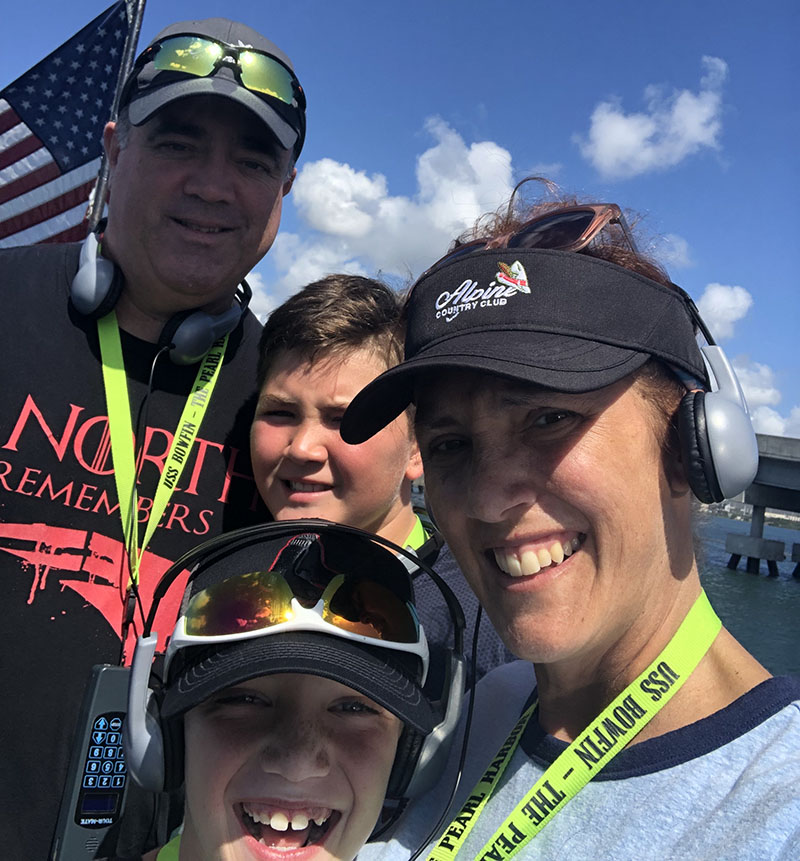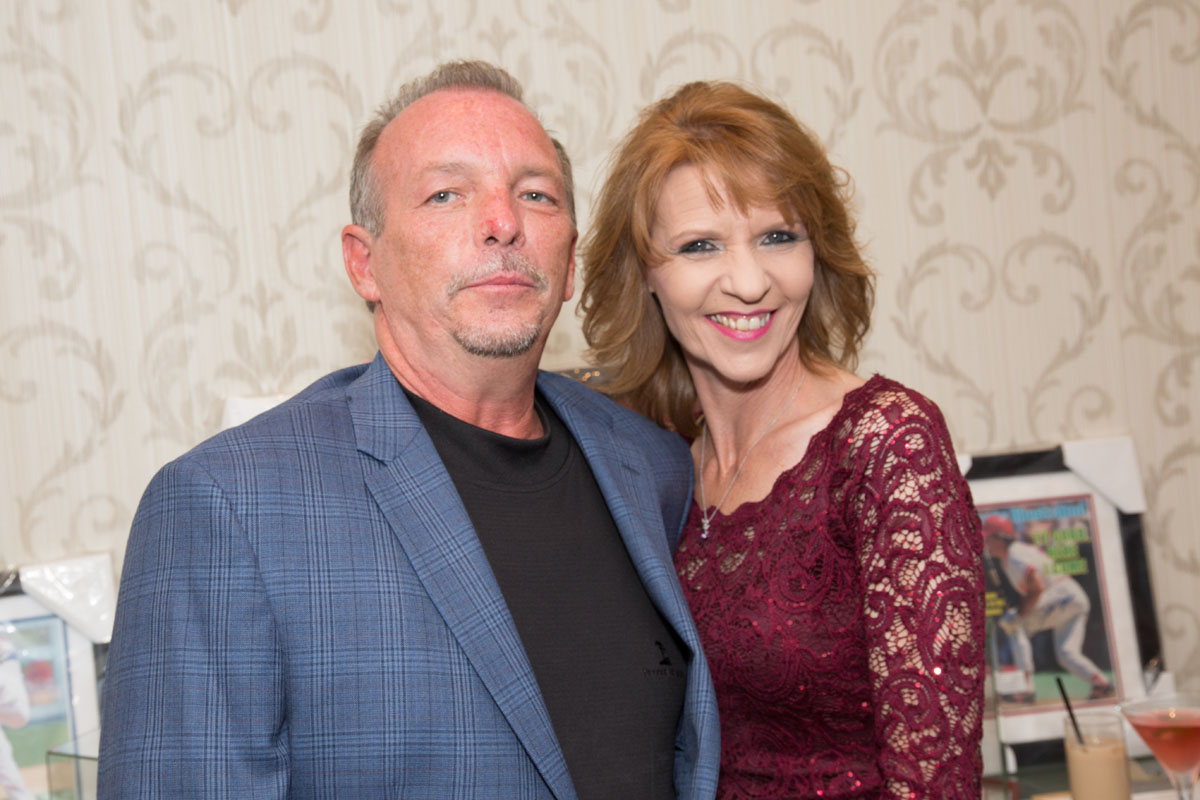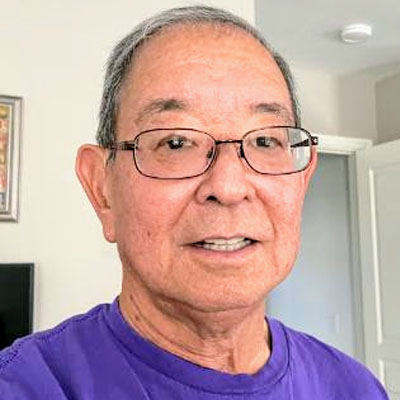Leanne Pierce’s 45th Birthday Was One She’ll Always Remember
Julia Brabant, December 2020Leanne Pierce’s 45th Birthday Was One She’ll Always Remember
But it wasn’t because of a surprise celebration or a special family trip. Instead, the Rhode Island resident, wife and mother of two found herself spending her big day sitting in the hospital, with the doctors and radiologists sharing words she’d never forget.
“We know we’re dealing with cancer,” the radiologist said. “We’re just not sure where it’s coming from.”
That news came following a few weeks of vague symptoms that were similar to more minor illnesses including acid reflux, a mild cough, stomach discomfort and minor fatigue. She also began experiencing night sweats, hot flashes and other changes that were similar to those women experience as a natural part of aging.
She also developed a persistent fever and scheduled a visit with her doctor’s office. Once there, she met with the nurse practitioner for tests. She’d had Lyme disease several times in the past, and she wanted to make sure things weren’t related.
I’ve always felt, since day one, that we’re on the verge of finding a cure. I thought the chemotherapy regimen might buy me enough time for medical science to advance and expand my treatment options.
Without any answers, she went home, but her symptoms continued. Several days later, she visited the office again for a chest X-ray. The nurse practitioner told Leanne she likely had a virus. In the coming days, though, the fever continued, making her increasingly nervous.
“Having a fever that long isn’t normal,” her friend, a nurse, said, urging her to make another call to her doctor’s office. “Tell them you need to be seen. Don’t take no for an answer.”
Leanne did so and returned to undergo testing for mono. Still not getting the answers she needed, her doctor urged her to seek treatment at the emergency room the night before her 45th birthday.
There, the ER doctors asked her what brought her in. Leanne explained that while she, personally, wasn’t deeply concerned about her symptoms at this point, her friend was making her feel more so by telling her that an intermittent fever could be a sign of cancer in someone her age.
At the emergency room, she had numerous blood tests and a CAT scan. Within hours, she had at least some of the answers she needed. She had a 2.5-cm cystic lesion on her pancreas and additional lesions on her liver. There was also evidence of her lymph nodes reacting to whatever was in her body.
Rather than send her home ahead of additional necessary testing, the ER doctor encouraged her to stay put and spend the night in the hospital so that the team could line up appointments and additional tests without delay.
The following day, doctors told her she had an infection, an organ cancer or lymphoma. They ultimately determined it was pancreatic cancer. The hospital said she had two options: undergo standard chemotherapy treatments, or undergo a second, scaled-back chemotherapy regimen they referred to as a clinical trial. The scaled-back version, doctors believed, would likely give Leanne a more favorable quality of life than the current standard of care would provide.
Armed with the information about her options and acquired knowledge that she did, in fact, have cancer, she did what anyone should do after receiving a serious diagnosis – she sought out a second opinion. She contacted Dana-Farber Cancer Institute in Boston, Massachusetts, and the team there said they could see her during the next business day. Once there, her oncologist urged her not to undergo the more muted chemotherapy regimen other doctors had recommended, but rather, to receive the full and complete chemotherapy treatment.
Leanne also underwent a biopsy, genetic testing and genomic testing, all of which sought to give her personalized information on clinical trials and available treatment methods based on her own unique biology.
Within a week, she began undergoing chemotherapy using a combination of drugs called FOLFIRONOX, which, she knew, was typically effective in patients for an average of about 11 months.
“I’ve always felt, since day one, that we’re on the verge of finding a cure,” she said. “I thought the chemotherapy regimen might buy me enough time for medical science to advance and expand my treatment options.”
At Dana-Farber, she received her chemo on the same floor as the breast cancer patients, drawing comfort from and developing a sense of camaraderie with women who fell within a similar age range. Her 50 chemotherapy treatments were intensive and lasting between four and six hours a day every other week.
When I think about having chemo and the toll it took on me, I thought there was no way it didn’t destroy whatever was in my body. I couldn’t believe when they said they were finally giving me a break from the chemo.
Leanne also began adopting significant lifestyle changes while her treatments were ongoing, modifying her diet to cut down on or eliminate her intake of sugars, flour and acidic foods and drinks. She also began exploring alternative treatment options, undergoing biweekly acupuncture sessions as well as acupressure sessions with an emphasis on visualization, or imagining positive outcomes with the hope of helping bring them to fruition.
Her first follow-up scan after undergoing treatment with FOLFIRINOX revealed encouraging news – her tumor had shrunk by 75%. Subsequent scans showed that things remained stable, which wasn’t necessarily bad news, but it wasn’t what she hoped to hear, either.
“As a patient, you want things stabilized – but you also just want the tumor gone,” Leanne said.
Throughout her ordeal, Leanne had known about a spot on her liver. In December of 2019, scans revealed she no longer had active cancer on her pancreas – but the large spot on her liver remained. She and her husband, Kevin, wanted her medical team to remove the spot, but the hospital’s tumor board initially disagreed.
She and her oncologist were persistent in encouraging the tumor board to review her case another time. In March, 2020, she had the liver spot removed via cryoablation, and a subsequent biopsy revealed positive news: the spot wasn’t cancerous at all, but rather, a cyst she likely had since birth. After another round of scans, the doctor recommended Leanne take a break from the chemotherapy.
“The data doesn’t support us continuing to treat you with chemo when there’s no sign of active cancer,” she’d said.
That was June 22, 2020. While, at one point, Leanne believed she’d be on chemo for the foreseeable future, she hasn’t had to have any treatments since.
“When I think about having chemo and the toll it took on me, I thought there was no way it didn’t destroy whatever was in my body,” she said. “I couldn’t believe when they said they were finally giving me a break from the chemo.”
Now, she returns for regular screenings and lab work and hopes to return to have the port used for her chemotherapy treatments removed.
“I never felt like myself with the port in,” she said. “After what I’ve been through, having the port removed doesn’t seem so bad.”
Leanne has also become an increasingly vocal member of the pancreatic cancer community, taking calls from patients and serving as a source of support and knowledge until the COVID-19 pandemic ends, paving the way for her to do more.
When speaking with other patients facing pancreatic cancer or other serious diagnoses, Leanne stresses several points. First, she tells them, always secure a second opinion when you receive a serious diagnosis, or when a doctor recommends an intensive form of treatment. Second, she encourages patients to be their own advocates, whether that means asking more questions of their physicians or performing their own research about potential treatment methods.
Leanne also acknowledged the importance of having familial support. Her husband, Kevin, advocated for her throughout her journey, helping research new and innovative treatment opportunities while making every effort to keep her spirits high along the way.
“We’ve been on the same page since the date of my diagnosis – I don’t know where I’d be if it wasn’t for him,” she said. Leanne also noted that the pair largely stayed off the web in the days following her diagnosis, and when they did use it, they did so to research available treatment methods, rather than grim prognoses or horror stories.
“When I did go online, or when my husband did, we were looking for survivor stories,” she said.
Today, one of those stories is her own.
Leanne Pierce has not undergone treatment for active cancer since June 9, 2020. Her scans continue to show no sign of active cancer.




